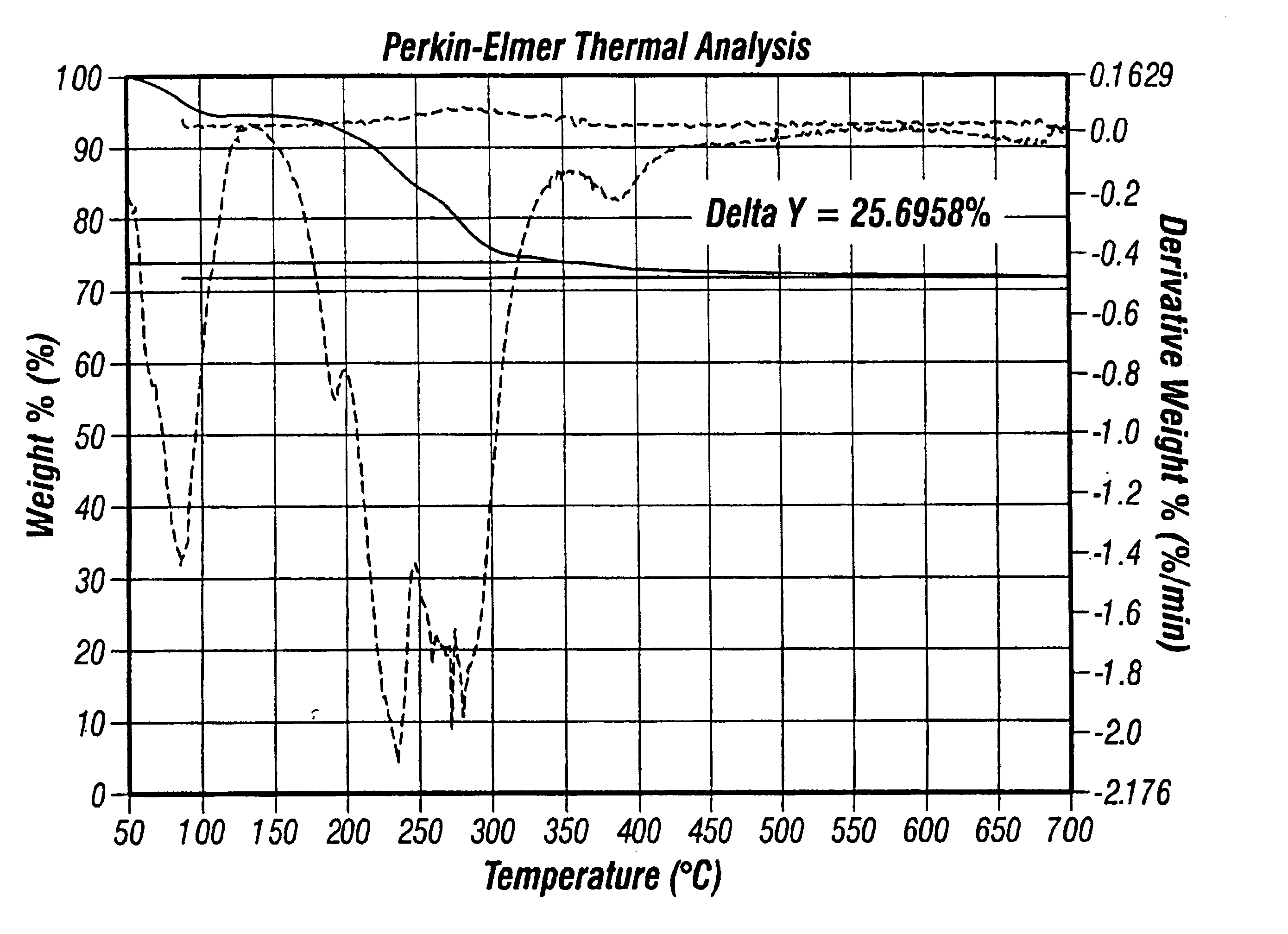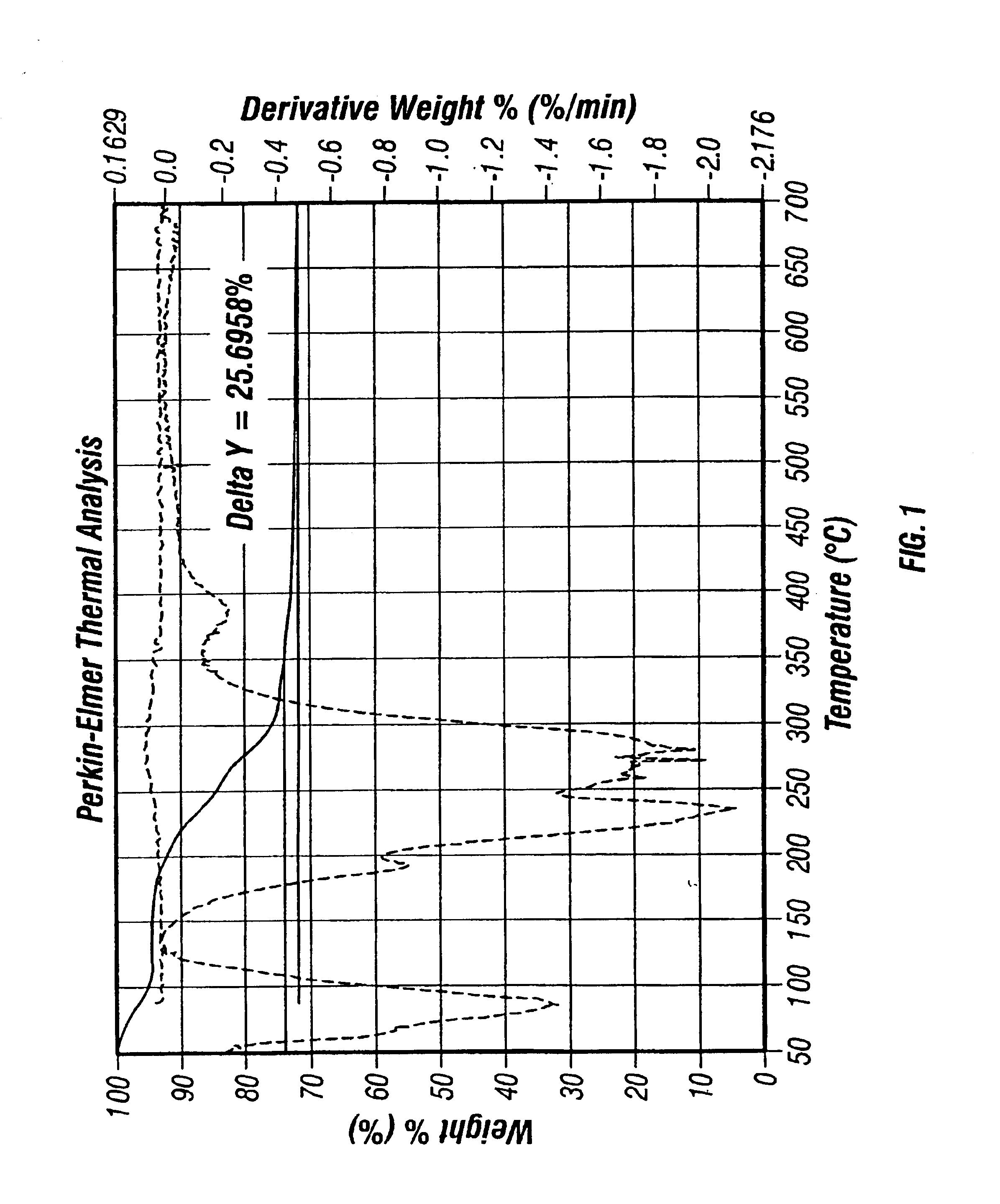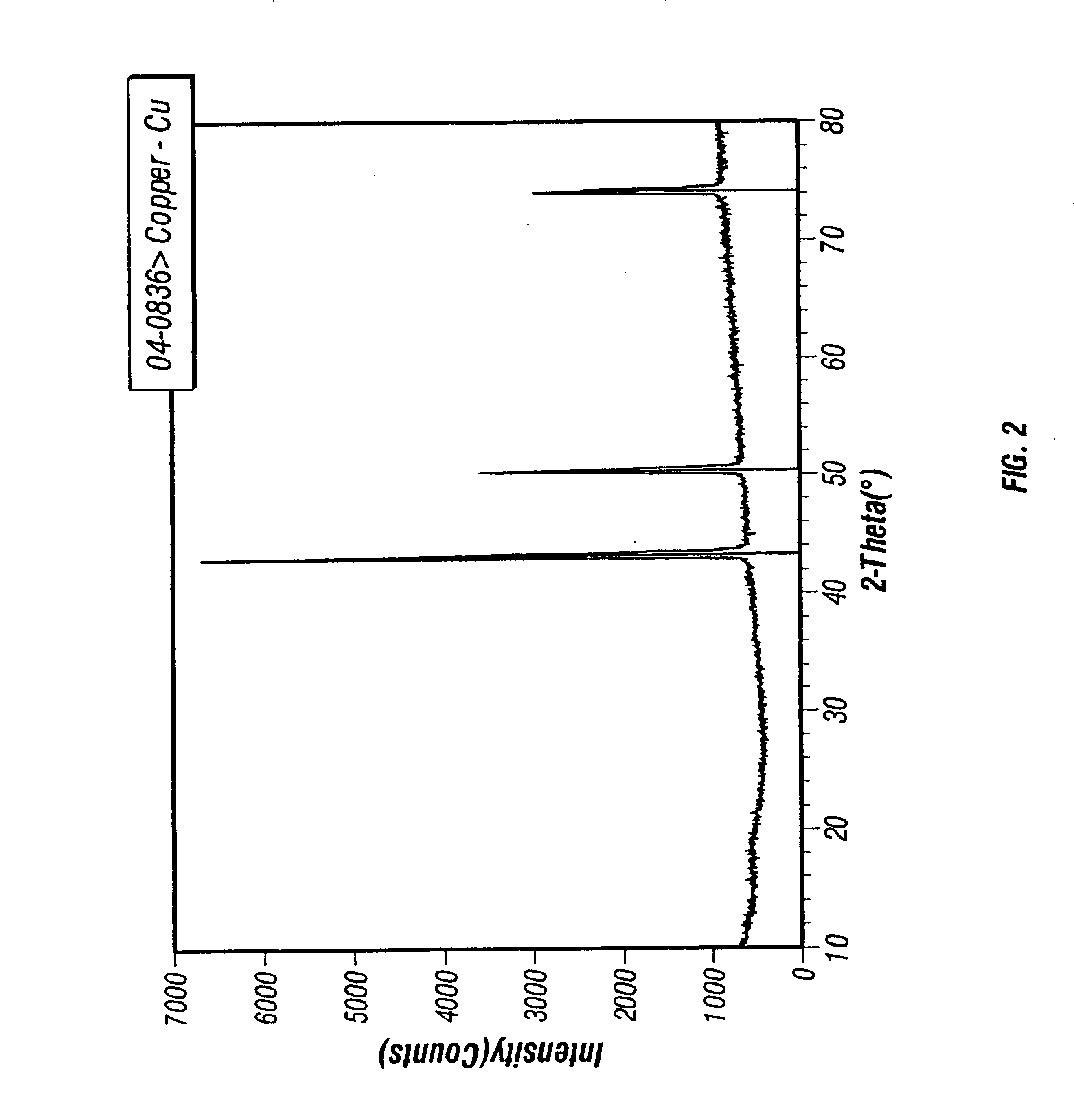Copper nanocrystals and methods of producing same
a technology of copper nanocrystals and nanocrystals, which is applied in the field of copper nanocrystals and methods of producing same, can solve the problems of degrading the fine architecture structure of the substrate, increasing the difficulty of designing and fabricating and increasing the difficulty of manufacturing ultralarge scale integrated circuit chips. achieve the effect of reducing copper
- Summary
- Abstract
- Description
- Claims
- Application Information
AI Technical Summary
Benefits of technology
Problems solved by technology
Method used
Image
Examples
example 1
[0065]Synthesis and Characterization of Copper Nanocrystals Procedure 1A using 1-decyl-2-methylimidazole as passivating Agent: Under argon and at room temperature 20 mL of pyridine was added to a vigorously stirred 0.25 M pale blue solution of copper nitrate (25 mL, 6.25 mmol) and the color immediately became deep blue. Hexanes (50 mL) was then added. To the mixture a freshly prepared solution of NaBH4 (0.60 g) in water (40 mL) was added dropwise in a period of 15 minutes and further stirring was continued for another 15 minutes to afford a (red) brown mixture. If stirring was stopped a brown aqueous phase and a colorless hexanes phase could be observed. To the stirred red-brown mixture 1-heptyl-4-(4pyridyl)pyridium bromide (0.697 g, 2.08 mmol, from Aldrich) was added and stirred for 30 minutes followed by addition of 1-decyl-2-methylimidazole (0.700 g, 3.125 mmol, from Aldrich) and stirring for half an hour. Black insoluble material was formed in the aqueous phase and partially pre...
example 2
[0073]Copper Films from the Passivated Nanocrystals. Synthesis of 5.5±1.0 nm copper nanocrystals are passivated with either tetra-n-octylammonium decanoate or 1-decyl-2-methylimidazole. These copper nanocrystals melt at about 350° C., exhibit X-ray diffraction spectra consistent with copper metal, and are highly soluble (up to 10 wt. %) in organic solvents ranging from n-alkanes to ethyl lactate. Thermolysis of the nanocrystals at 350° C. under a nitrogen / hydrogen atmosphere afforded pure copper metal, with complete evaporation of the passivating agents. Weight loss upon heating, as measured by thermogravimetric analysis, was 27-32%. Thermogravimetric analysis also indicated that evaporation of the passivating agents occurs between 150-250° C. A 6 wt. % dodecane solution of 5.5±1.0 nm tetra-n-octylammonium decanoate-passivated copper nanocrystals was spin coated onto a TaN-coated (1000 Å by PVD) flat silicon wafer. Spin coating of nanocrystal solutions onto a TaN-coated silicon wafe...
example 3
[0074]Spin Coating and Heating of the Passivated Nanocrystals. A dilute (<1 wt. %) pyridine solution of copper nanocrystals is spin coated onto a silicon wafer containing an array of 0.1×1.0 μm blind vias. Notably, substrates that are heated to about 300° C. do not have a continuous copper film on the substrate plateau. The substrate following nanocrystal deposition prior to heating shows completely conformal coverage of the vias and plateau region. Upon heating to 150° C., wicking of nanoparticles from the plateau region to the via is observed. At about 300° C., a perfectly conformal copper film has been obtained in the via.
PUM
| Property | Measurement | Unit |
|---|---|---|
| size | aaaaa | aaaaa |
| diameter | aaaaa | aaaaa |
| size | aaaaa | aaaaa |
Abstract
Description
Claims
Application Information
 Login to View More
Login to View More - R&D
- Intellectual Property
- Life Sciences
- Materials
- Tech Scout
- Unparalleled Data Quality
- Higher Quality Content
- 60% Fewer Hallucinations
Browse by: Latest US Patents, China's latest patents, Technical Efficacy Thesaurus, Application Domain, Technology Topic, Popular Technical Reports.
© 2025 PatSnap. All rights reserved.Legal|Privacy policy|Modern Slavery Act Transparency Statement|Sitemap|About US| Contact US: help@patsnap.com



